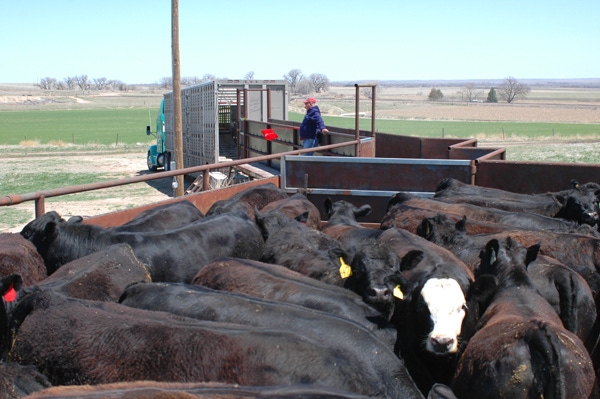March 19, 2015

The futures market and government insurance programs have been the foremost tools for cattle producers looking to manage their risk. We’ve all been taught to combine those tools with our marketing and managing practices to manage our risk, but it’s becoming increasingly apparent that these risk management tools are inadequate in our changing marketing structure and increased market volatility.
Of course, we’ve developed hybrids based off the futures market – forward contracting is one, for instance – but the unfortunate result is that the futures system increasingly relies on speculators or investor funds to provide the needed liquidity to the markets. In addition, futures have morphed into a pseudo price discovery tool, which isn’t a role they were truly ever intended to play. As a result, volatility and risk are actually increasing for the average producer.
The attempts to move away from our traditional pricing system haven’t been effective and have contributed to the shortcomings in transparency, liquidity and price discovery. Many have tried to develop their own closed pricing systems as a tool to reduce risk, increase transparency and create prices based on actual value, but these efforts have failed because they can’t withstand the disconnects that occur from the mainstream market.
It’s not that it’s impossible to create a marketing system that simultaneously reduces risk and volatility while being responsive to consumers, equitable and transparent. After all, those aren’t incompatible or inherently irreconcilable differences; they simply haven’t been embraced with sufficient commitment or a severe enough break from the status quo to overcome the deficiencies created by our current system.
One major reason we haven’t seen a radical departure is that most of the risk in today’s system is experienced by the production side of the business – the cow-calf, feeding and packing segments. There is incentive for the wholesale, retail and HRI trades to reduce volatility and risk, increase transparency, and improve price discovery, market differentiation and segmentation. However, with constant inventory turnover and non-stop participation in the market, the risk over the long term is minimized relative to the production side.
The key to improving our marketing system is to provide the economic incentives that will fuel substantive changes. Changes to our marketing system that don’t incorporate players beyond the packing gate are severely restricted. That’s because the packing industry will always be the bottleneck in our marketing system, and any substantive changes will require that sector to take the lead.
What should a new system look like?
If the industry was to design a new marketing system, what would it look like? Retail and HRI prices are relatively static, though they do respond to seasonal demand incentives and to the broader macro signals created by supply and demand. On the production side, there must be market signals that allocate supply in relation to demand, but the wild week-to-week gyrations – and even daily gyrations – that we currently experience not only magnify risk, but do little to shift supply.
The market must have mechanisms in place that align supply with demand in a far more effective manner. Of course, transparency and price discovery have always been the complaints of today’s system. There’s a great need for increased information flow and the sharing of information between segments, as well as a pricing system that fosters more of a partnership mentality than an adversarial one between segments.
We also must have more clearly defined targets for specific markets, as well as metrics that adequately reflect the value they create or lose for the system. And, of course, from a risk standpoint, producers will always be subject to the broader supply and demand constraints that are essential to any system. However, the day-to-day, hour-by-hour and weekly fluctuations must be reduced, as the risk and volatility make it very difficult to maintain sustainability.

BEEF Seedstock 100
Looking for a new seedstock provider? Use our BEEF Seedstock 100 listing to find the largest bull sellers in the U.S. Browse the Seedstock 100 list here.
Finally, the system must send the appropriate signals to ensure an ever-improving product that not only maintains demand but serves to grow demand as well. If these are the criteria, by any standard, today’s system is wholly inadequate and allows ample room for improvement.
Without question, the beef industry is both a highly efficient and complex system that creates complex problems and risks. While historically high prices have mitigated many of the negative effects, the last several years clearly illustrate that the system is susceptible to cascading failures – where one error creates another, resulting in a tidal wave of problems and increased risk. When margins return to more historical levels, the need for radical, rapid change to our marketing system will become more apparent.
Complexity doesn’t preclude a functional, flexible and responsive system that increases transparency and improves price discovery. I’m a traditionalist and a huge fan of the free-market system, and I steadfastly defend our system as not perfect but adequate. Yet, I’m hopeful that the next generation of marketing systems will be a vast improvement and radically different from the ones we know today.
Many of these changes are already occurring at the periphery; in complex systems, change often seems slow until it reaches a tipping point. I believe the industry is moving toward that tipping point every day.
The opinions of Troy Marshall are not necessarily those of beefmagazine.com and the Penton Agriculture Group.
Other resources you might enjoy:
16 questions we bet Chipotle won't answer
Valuable ranching lessons I learned from my employee and mentor
10 tips for keeping first-calf heifers in tip-top shape
About the Author(s)
You May Also Like



